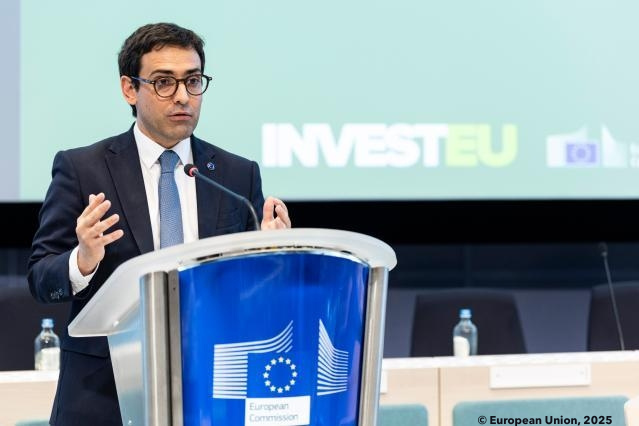
Long advocating for a massive simplification effort across EU funding programmes, the European Commission is expected to heavily change the structure of its next long-term budget for 2028-2034, or Multi-Annual Financial Framework (MFF). In this context, the creation of a European Competitiveness Fund (ECF) aggregating a large portfolio of initiatives, including all investments related to research and innovation (R&I), crystallises all the interrogations, ahead of the publication of the Commission’s official proposal in July.
Speaking at the Invest EU’s ”Empowering a Competitive Union” on 12 May, the Commission’s Executive Vice-President for Prosperity and Industrial Strategy Stéphane Séjourné confirmed previous rumours that Framework Programme 10 (FP10) which will replace Horizon Europe in 2028 should be part of the Competitiveness Fund, which he described as a “new, coherent architecture that follows the entire life of companies from research to industrial production.”
While the details of the proposition remain unknown at this stage, the architecture of the Fund seems to have been drawn with little regards to the opinion of the research community including EERA, which has widely been advocating for a ring-fenced, standalone research programme, fearing the reattribution of R&I funds to other priorities, if all put under the umbrella of the Competitiveness Fund. Similarly, the European Parliament and most EU member states have so far rejected the superfund proposed by the Commission.
On 13 May, a new leaked chart gave further insights on the structure of the proposed ECF, and reiterated its ambitious objective of supporting the entire investment journey from fundamental research to infrastructure deployment. According to the leaked presentation, the Commission is planning to divide the Competitiveness Fund in five different pillars: Digitalisation; Resilience, Defence and Space; Clean Transition and Decarbonisation; Health and Biotechnology; and finally, Blue-sky Research and Careers. The current clusters currently composing Horizon Europe are scattered across these pillars, alongside other central EU programmes. For instance, the Clean Transition and Decarbonisation pillar seems to gather the LIFE programme, the Innovation Fund, and Horizon Europe Cluster 5 (Climate, Energy & Mobility).
If the governance of the Competitiveness Fund is yet to be clarified, it appears that each pillar will be steered by a Chair and a Vice Chair, and that the overall ECF will be under the supervision of a Fund Manager and a Steering Board. However, the European Commission has refused to comment the leaked memo and whether it indeed corresponds to its current plans for the next MFF. The next steps in the process will undoubtedly lead to a stark political confrontation, given the markedly different positions held by the Commission on one side, and the member states, the European Parliament, and the wider research community on the other.